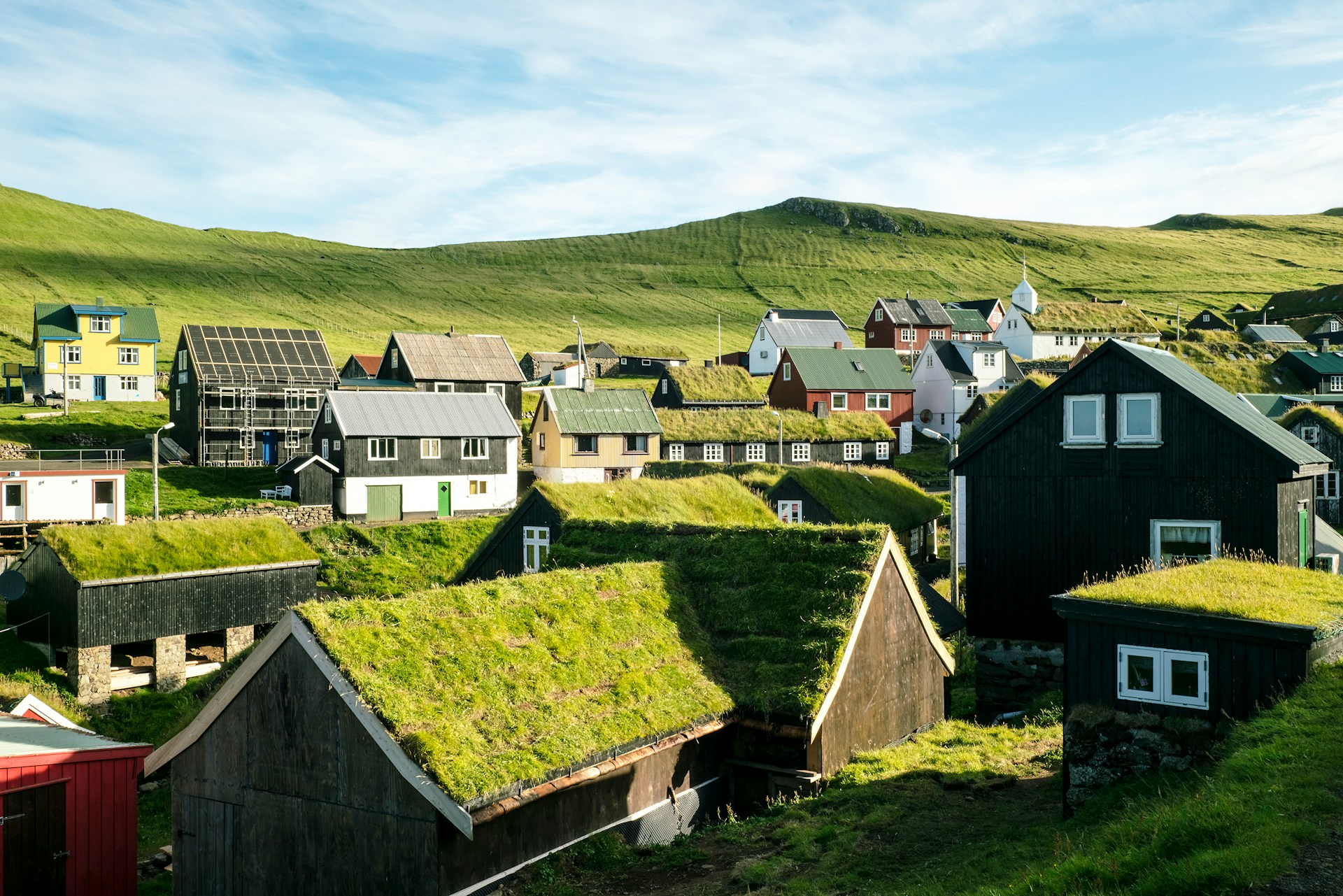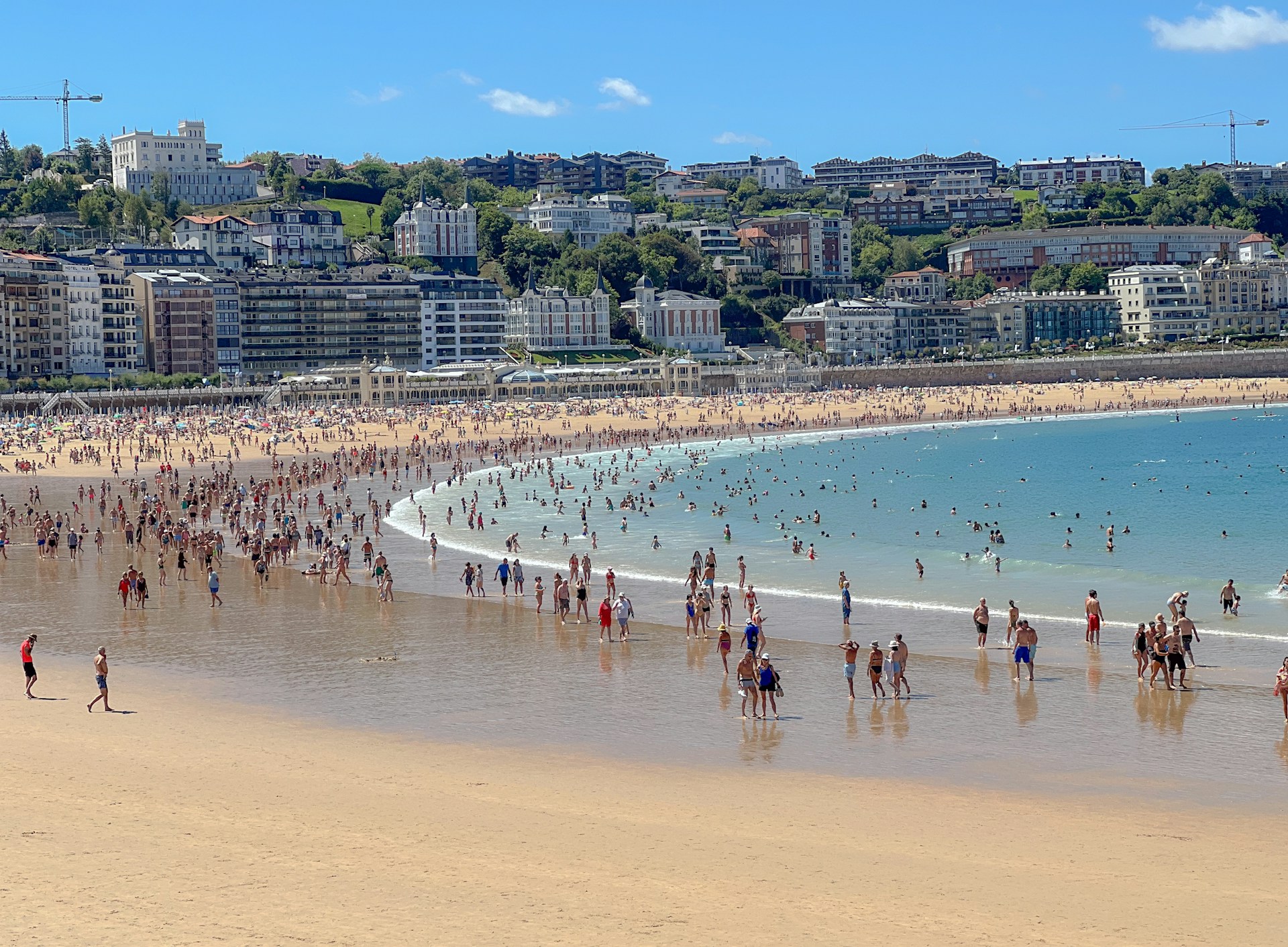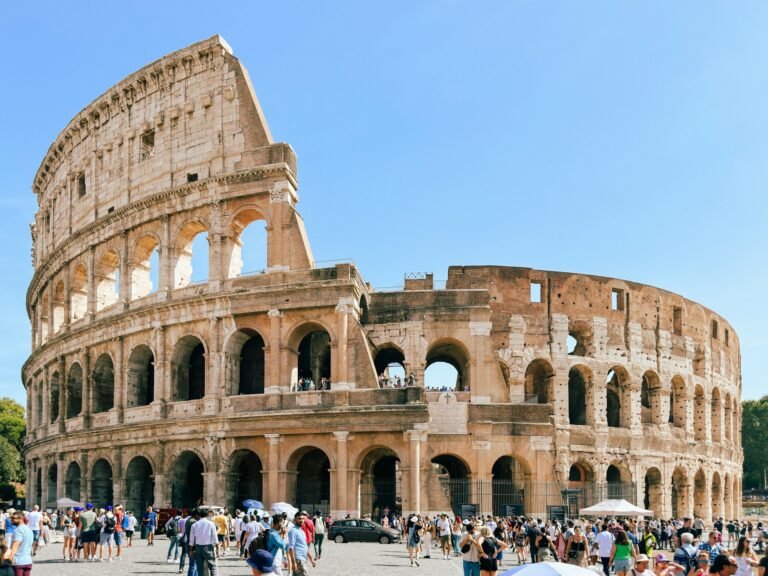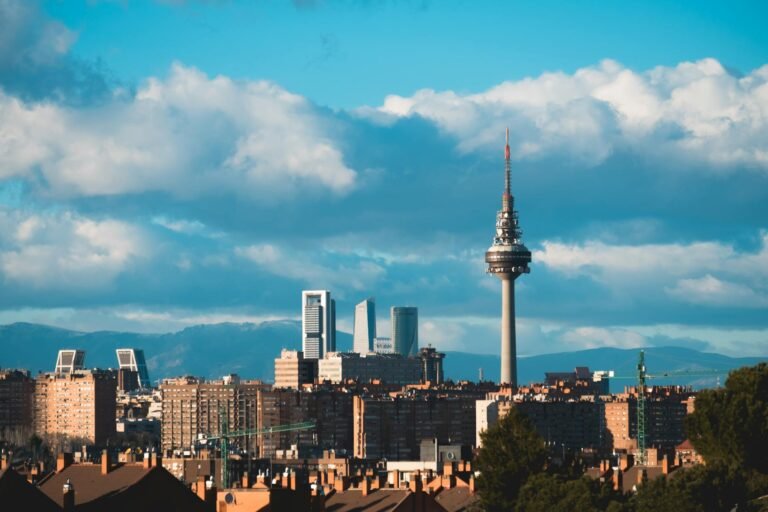Last summer, I found myself standing on a sun-drenched plaza in Seville, sweat trickling down my back as the mercury hit 104°F. A local shopkeeper caught my eye, grinned at my obvious discomfort, and said, “You picked the wrong month, amigo.” Ain’t that the truth.
Europe in summer is magical—but only if you know where to go. After fifteen years of summer wandering (and occasionally blundering) across the continent, I’ve compiled my ultimate hit list of European summer spots that deliver the goods without melting your face off or drowning you in tourist hordes.
The Sweet Spot: When to Go Where
Before diving into the destinations, let’s be real about timing. “Summer” in Europe is a sliding scale. Head to Sicily in August and you’ll be begging for mercy; visit Stockholm that same week and you might need a light jacket for evening strolls. I’ve learned the hard way that European summer travel isn’t just about where but when.
My rule of thumb: Northern Europe shines July-August, while Mediterranean gems are best enjoyed May-June or September when temperatures simmer down to “pleasantly warm” from “seventh circle of hell.” Now, with timing in mind, let’s explore the places that deserve your precious vacation days.
1. The Azores, Portugal – Nature’s Best-Kept Secret

The first time I landed in São Miguel, the largest island in this Portuguese archipelago, I wondered if I’d somehow ended up in Jurassic Park. Emerald-green crater lakes, dramatic coastal cliffs, and steaming hot springs dotted across landscapes that shift from volcanic moonscapes to verdant cow pastures in the span of a ten-minute drive.
The Azores sit in the middle of the Atlantic, blessed with temperatures that rarely climb above 80°F even in July and August. This makes them perfect for hiking, canyoning, and whale watching without turning into a sweaty mess.
What I love most is how uncrowded these islands remain despite increased flights from both Europe and the US. The tourism infrastructure has improved dramatically—you’ll find excellent local restaurants and charming guesthouses—but McDonald’s and Starbucks are refreshingly absent.
Don’t miss: Taking a dip in the iron-rich thermal pools at Terra Nostra Garden in Furnas, followed by a traditional cozido stew cooked underground using volcanic heat. Just prepare yourself for the egg-scented air around the hot springs—a small price to pay for paradise.
2. The Albanian Riviera – Mediterranean Magic Without the Markup
Five years ago, I took a chance on Albania’s southern coast after a local in neighboring Greece insisted it was “Greece from 30 years ago but with better coffee.” He wasn’t wrong. Crystal-clear waters rival anything you’ll find in more famous Mediterranean destinations, but at literally a third of the price.
The stretch from Vlorë to Ksamil offers a string of gorgeous beaches punctuated by charming villages and Byzantine ruins. Infrastructure has improved dramatically, but you’ll still feel like you’ve discovered something special before it hits the mainstream.
The sweet spot for visiting is June or early September when the weather is perfect but Italian and Greek tourists (who have already discovered this gem) haven’t flooded in.
Insider tip: Rent a car. Public transport exists but isn’t comprehensive, and some of the best beaches are only accessible via winding coastal roads that offer views so spectacular you’ll want to pull over every five minutes. Trust me, I learned this after a sweaty, frustrating day trying to navigate local buses with my pigeon Albanian.
3. The Faroe Islands – Scotland on Steroids

“Wait, isn’t this supposed to be a summer list?” I hear you ask. Yes, and the Faroes offer summer like nowhere else—wild, dramatic, and refreshingly cool when the rest of Europe swelters.
This Danish autonomous territory sitting between Iceland and Norway delivers the kind of raw, elemental beauty that makes your Instagram followers assume you’ve applied heavy filters. You haven’t—it really looks like that.
Think waterfalls plunging directly into the ocean, grass-roofed houses perched on impossible cliffs, and sheep outnumbering humans by about 70,000 to 50,000. Summer days stretch endlessly with nearly 20 hours of daylight in June and July, giving you ample time to explore.
I spent a week there last July and packed both sunscreen and a down jacket—sometimes needing both on the same day. That’s part of the charm.
Traveler’s note: Weather is wildly unpredictable. The locals joke they experience all four seasons in a day, and they’re not exaggerating. Layer up and embrace the elements—the quickly changing light makes for spectacular photography.
4. Ljubljana & Lake Bled, Slovenia – Central Europe’s Charm Champions
Slovenia manages to pack Alpine majesty, Mediterranean influence, and Slavic soul into a country smaller than New Jersey. Its capital Ljubljana remains criminally underrated despite being one of Europe’s most livable cities.
Summer brings the riverside cafés to life, with locals sipping local wines under white linen umbrellas. The city center is largely pedestrianized, making it a joy to explore on foot or by bicycle.
Just an hour’s drive from the capital sits the impossibly picturesque Lake Bled, where a medieval castle clings to a cliff and a church-topped island seems to float in the middle of crystal-clear alpine waters.
I visited during a heatwave last summer but found perfect relief swimming in Lake Bled’s refreshing waters followed by a slice of the famous Bled cream cake (kremšnita) that somehow tastes better with a view of those Julian Alps.
Local secret: Skip the touristy (and pricey) rowboats to Bled Island and instead head to Lake Bohinj, just 30 minutes away. It’s larger, less crowded, and equally stunning—without the premium pricing.
5. The Cyclades Beyond Santorini & Mykonos, Greece
Look, Santorini sunsets are magic and Mykonos knows how to party. But they’re also crowded and expensive as hell. Instead, I’ve fallen for their lesser-known siblings in the Cyclades archipelago.
Naxos offers the whitewashed charm and brilliant blue waters but adds excellent hiking, genuine local culture, and beaches where you’re not paying €20 for a sunbed. Amorgos brings dramatic cliffs and the spiritual vibe made famous in Luc Besson’s “The Big Blue.” Milos delivers otherworldly beach landscapes without the Instagram crowds.
My personal favorite? Tiny Folegandros, where I spent three perfect days eating grilled fish at tables literally set in the sand, climbing to a hilltop church for sunset, and swimming in water so clear it seemed like the boats were floating on air.
Timing tip: If you can, visit in June or September. July and August bring both higher prices and the meltemi—strong north winds that can disrupt ferry schedules and make beach days less pleasant.
6. The Basque Country, Spain & France – A Culinary Paradise with Beaches

Straddling the border between France and Spain, the Basque Country offers a cultural experience wholly distinct from either country. Plus, its northern Atlantic position means temperatures typically stay in the comfortable 70s-80s°F range even in peak summer.
San Sebastián (Donostia in Basque) has my vote for Europe’s perfect small city: a stunning beach right in the city center, more Michelin stars per capita than anywhere on earth, and an Old Town where the pintxos (Basque tapas) crawl elevates bar-hopping to an art form.
On the French side, Biarritz blends surf culture with Belle Époque grandeur. I spent a week bouncing between the two cities, plus smaller coastal towns like Getaria (for grilled turbot) and St-Jean-de-Luz (for perfect people-watching squares).
The hiking along the coastal paths between fishing villages offers the perfect counterbalance to all that eating and drinking.
Food note: Pintxos aren’t just food; they’re a social institution. Don’t sit down—the proper approach is to grab one or two items and a small drink (txakoli wine or cider) at each place, then move on to the next bar. Follow the locals and go where it’s crowded.
7. The Dolomites, Italy – Alpine Majesty Without the Crowds
While tourists flood Venice and the Italian Riviera during summer months, those in the know head north to the Dolomites. This UNESCO-listed mountain range delivers jaw-dropping landscapes that somehow blend Italian flair with Austrian precision (the region was part of Austria until WWI, and the influence remains).
Summer temperatures in the valleys hover around a pleasant 75°F, perfect for hiking, cycling, or simply gazing at the mountains from a café terrace. The distinctive pale limestone peaks turn pink at sunset in a phenomenon locals call “enrosadira” (alpenglow), best enjoyed with a spritz in hand.
I based myself in Cortina d’Ampezzo one summer and Ortisei another, finding both ideal for day hikes ranging from gentle meadow walks to more challenging via ferrata routes (where you clip into fixed cables on steeper sections).
Cultural bonus: This region offers a fascinating blend of Italian and Germanic cultures, including a third language—Ladin—still spoken in some valleys. You’ll find Italian espresso culture alongside Austrian-style pastries, and pasta dishes featuring distinctly un-Italian ingredients like speck and sauerkraut.
8. The Istrian Peninsula, Croatia – Italy Vibes at Half the Price
Croatia’s heart-shaped northern peninsula delivers everything people love about Italy—Roman ruins, hilltop towns, exceptional wine, truffles, and crystal-clear Mediterranean waters—with fewer crowds and gentler prices.
Split your time between coastal towns like Rovinj (a mini-Venice without the cruise ships) and interior medieval villages like Motovun, perched on hilltops and surrounded by truffle-rich forests and vineyards.
Last summer, I rented a tiny Fiat and spent days zigzagging between the coast and interior, stopping at konobas (family-run taverns) for hand-rolled pasta with truffles or seafood caught that morning, all washed down with local Malvazija wine that rarely makes it out of the region for export.
Budget hack: Prices drop noticeably just a few kilometers inland from the coast. Consider staying in one of the charming hill towns and driving to different beaches each day.
9. The Alentejo Coast, Portugal – Europe’s Wild West
While tourists pack Portugal’s Algarve region, the Alentejo coast to the north remains delightfully uncrowded. This stretch of dramatic Atlantic shoreline offers wild, untouched beaches backed by towering cliffs and fragrant pine forests.
The pace of life slows dramatically here. Whitewashed villages with cobblestone streets lead to small harbors where fishermen still bring in the day’s catch for local restaurants. The wine is exceptional, the seafood sublimely fresh, and the sunsets—especially from the cliffs near Zambujeira do Mar—are the stuff of dreams.
I spent a week driving the coastal route from Setúbal to Odeceixe, camping near empty beaches and dining in tiny restaurants where no one spoke English but everyone made sure I tried their homemade medronho (a potent fruit brandy).
Weather note: The Atlantic here isn’t the gentle Mediterranean. Expect refreshing water temperatures and occasionally strong waves—perfect for surfing beginners at gentler beaches like São Torpes.
10. The Baltic Coast, Germany – Northern Europe’s Secret Riviera
Germany has a coastline? And it’s beautiful? These were my thoughts before discovering the country’s Baltic shore, which unfurls in a series of elegant resort towns, chalk cliffs, and broad sandy beaches backed by pine forest.
The star is Rügen Island, where elegant 19th-century resorts like Binz offer a glimpse into the seaside holidays of Europe’s belle époque. The iconic strandkorb (hooded beach chairs) provide perfect windbreaks for reading or napping between swims.
Summer temperatures typically range from comfortable to pleasant (65-75°F), and the long northern days mean plenty of time for beach walks, cycling through coastal forests, or exploring the charming Hanseatic city of Stralsund on the mainland.
Cultural curiosity: This region was part of East Germany until reunification, and some of the massive Nazi-built resort complexes (like Prora on Rügen) have been converted into museums, hotels, and apartments—fascinating glimpses into different eras of German history.
The Ultimate European Summer Awaits
The beauty of Europe in summer lies in its diversity. Within a few hours’ flight, you can go from Nordic cool to Mediterranean heat, from packed beaches to empty hiking trails, from world-famous cuisine to undiscovered local specialties.
My biggest piece of advice after years of summer exploration? Don’t try to see everything. Pick a region or two, settle in long enough to find your favorite local café, and leave time for those unplanned moments when you discover a hidden beach, a perfect viewpoint, or a tiny restaurant that becomes the highlight of your trip.
Oh, and always, always carry a swimsuit in your day bag. You never know when you’ll need it, and nothing feels worse than missing a perfect swimming opportunity because you came unprepared. I learned that lesson the hard way in a perfect cove in Croatia, reduced to swimming in my underwear while locals politely pretended not to notice.
Europe in summer isn’t just a destination—it’s a feeling. Go find yours.
Frequently Asked Questions
What is the best month to visit Europe in summer?
For Mediterranean destinations, aim for June or September when temperatures are pleasant but crowds are thinner. Northern Europe shines in July and August with long days and milder temperatures.
Which part of Europe is less crowded in summer?
Eastern European countries like Slovenia, Albania, and Romania offer similar beauty to Western Europe with fewer tourists. Even within popular countries, heading to lesser-known regions (like Italy’s Dolomites instead of Tuscany) means fewer crowds.
Is Europe too hot in July and August?
Southern Europe can be uncomfortably hot in peak summer, with temperatures regularly exceeding 90°F. Northern and Central Europe generally enjoy pleasant temperatures between 65-80°F during these months.
What are the cheapest summer destinations in Europe?
Eastern European countries like Albania, Bulgaria, and Romania offer excellent value. Portugal and Greece (away from major tourist hubs) remain relatively affordable compared to France, Italy, or Switzerland.
Do I need to book accommodations in advance for European summer travel?
For popular destinations in July and August, booking 3-6 months ahead is advisable. For shoulder season (June and September) or less touristic areas, 1-2 months is usually sufficient.
Is swimming good in Europe during summer?
Mediterranean waters are warmest in July and August (70-80°F). The Atlantic and Baltic are cooler (60-70°F), while the North Sea remains chilly even in summer. Alpine lakes typically warm up enough for refreshing swims by July.
What should I pack for European summer travel?
Layer, layer, layer! Even in summer, temperatures can vary dramatically. Pack light clothing but always include a light jacket, comfortable walking shoes, and rain protection. Don’t forget a travel adapter for electronics.
Are there any summer festivals worth planning a trip around?
Countless! Some standouts include the Edinburgh Festival (August, Scotland), La Tomatina (August, Spain), Sziget Festival (August, Hungary), and local saint’s day celebrations throughout Mediterranean countries.
How do Europeans handle the heat without air conditioning?
Traditional Mediterranean buildings have thick walls and small windows to keep cool naturally. Northern Europeans often use external shutters or blinds to block sun during the day. Note that many smaller or budget accommodations may not have air conditioning.
What’s the best way to travel between European destinations in summer?
High-speed trains are comfortable and connect major cities efficiently. For coastal or island hopping, ferries offer scenic routes. Rental cars provide the most flexibility for exploring rural areas, though parking in cities can be challenging and expensive.
Top Recommendations for European Summer Travel
Accommodations:
- The Azor Hotel – Contemporary luxury in the Azores with incredible ocean views
- Bujtina Kodiket – Charming guesthouse in Albania’s riviera with home-cooked meals
- Hotel Føroyar – Grass-roofed hotel in the Faroe Islands with panoramic views of Tórshavn
- Vila Bled – Former presidential residence with prime lakefront position in Slovenia
- Anemomilos Apartments – Family-run clifftop accommodations on Folegandros, Greece
Restaurants & Food Experiences:
- Asador Etxebarri – World-renowned Basque Country restaurant where everything is grilled over oak
- Konoba Mate – Family-run tavern in Istria serving perfect hand-rolled pasta with truffles
- Furnas stew tasting – Try this unique dish cooked underground by volcanic heat in the Azores
- Ta Sigala – Tiny taverna on Folegandros serving the day’s catch at tables in the sand
- Hiša Franko – Ana Roš’s celebrated restaurant in Slovenia’s Soča Valley showcasing Alpine-meets-Mediterranean cuisine
Tours & Activities:
- Azores Whale Watching – Responsible cetacean watching in one of the world’s best spots
- Via ferrata in the Dolomites – Guided climbing routes for all skill levels
- Pintxos tours in San Sebastián – Expert-led culinary crawls through the Old Town
- Sailing in the Cyclades – Island-hopping adventures away from ferry routes
- Truffle hunting in Istria – Join hunters and their trained dogs searching for black and white truffles
Transportation:
- SATA Azores Airlines – Direct flights to the Azores from several European and North American cities
- Jadrolinija Ferries – Croatia’s main ferry operator connecting coastal towns and islands
- Binter Canarias – Inter-island flights in the Canaries
- Deutsche Bahn – German rail network with excellent connections to Baltic coastal regions
- Bolt – Ride-hailing app available in many European cities as an alternative to Uber
Booking Platforms & Resources:
- Direct Ferries – Compare and book ferry routes across Europe
- The Fork – Restaurant reservations platform widely used in Europe
- AllTrails – Hiking trail maps and reviews
- Omio – Compare trains, buses, and flights across Europe
- Visit Europe – Official European tourism association with seasonal guides






